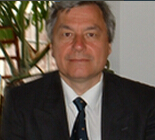The development of automatic analysis & optimization tools is a continuous concern and challenge for the research in the field of mechanical systems design. Important publications reveal a growing interest in analysis & optimization methods for multi-body systems (MBS), which may facilitate the self-formulating algorithms. Such methods are intensively used to develop powerful virtual prototyping software environments. The stages to create a virtual prototype mirror to the physical model as follows: modeling (create parts, restrictions, and forces generating elements), simulation (analysis/testing), validation (compare virtual and experimental data), refining (improve the fidelity of the virtual model in relation to the physical one, e.g. add friction, flexible parts, actuating & control systems), optimization (improving the behavior of the mechanical system, usually from - but not limited to - functional point of view). The physical (hardware) prototyping is a support activity for the virtual (software) prototyping, providing the experimental results used in the validation stage of the virtual model. The basic principle for a successful virtual prototyping process is to manipulate the simplifying assumptions in a way that reduces the complexity of the virtual model, but without altering the accuracy of the results.
Modeling and optimization (MOO) means finding the best solution for a problem under given circumstances by using the complex mathematical models, some algorithms and some software. Mathematical optimization means that the problem to have solving must be respect one objective function, the constraints for all imposed parameters and one iterative algorithm that was validated by the experimental assisted research.
Many contradictory problems in aerospace, robotics, mechanical engineering, manufacturing systems, bioengineering, materials technology, power energy and neurorehabilitation require optimization about multiple conflicting criteria, such as the speed of the system and its energy efficiency, or precision and stability, or require solving the multi objectives contradictory problems by using the Extenics theory.
[PDF]


